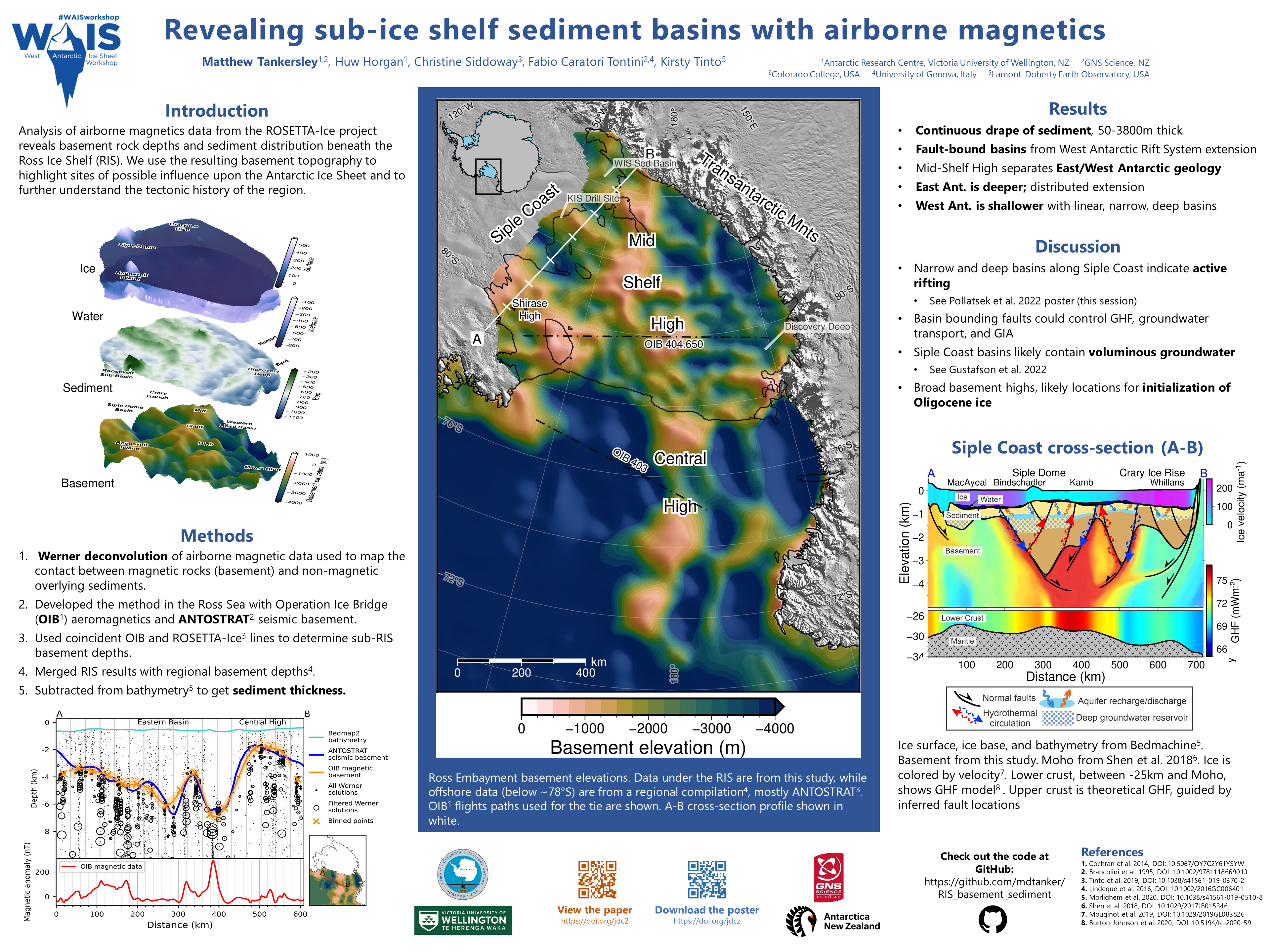Revealing sub-ice shelf sediment basins with airborne magnetics: implications for solid-earth-ice interactions
Matt Tankersley1,2, Huw Horgan1, Christine Siddoway3, Fabio Caratori Tontini2,4, Kirsty Tinto5
1 Victoria University of Wellington
2 GNS Science
3 Colorado College
4 University of Genova
5 Lamont-Doherty Earth Observatory, Columbia University
- GitHub repository with open-source code used in this research.
- Figshare link for this poster.
- GRL 2022 paper associated with this work.
Poster presented at the West Antarctic Ice Sheet Workshop 2022
Also presented at the SCAR INSTANT 2022 workshop titled: The Future of Geodetic-Geophysical Observational Networks in Antarctica.
The bedrock geology beneath Antarctica's southern Ross Embayment is concealed by 100– 1000s of meters of sedimentary deposits, seawater, and the floating Ross Ice Shelf (RIS). Our research strips away those layers to discover the shape of the consolidated bedrock below, which we refer to as the basement. To do this, we use the contrast between non-magnetic sediments and magnetic basement rocks to map out the depth of the basement surface under the RIS. Our primary data source is ROSETTA-Ice airborne measurements of the variation in Earth's magnetic field across the ice shelf, from flight lines spaced 10-km apart. We use the resulting basement topography to highlight sites of possible influence upon the Antarctic Ice Sheet and to further understand the tectonic history of the region. The basement features we image are characteristic of extensional tectonics, consistent with the setting in the West Antarctic Rift System. These features show continuity with Ross Sea basement features, suggesting a common tectonic development. In the center of the ice shelf, we delineate a broad, segmented, N-S basement high with thin (0–500m) sedimentary cover. We discover contrasting basement characteristics on either side of the RIS. The West Antarctic side displays evidence of active faults, which may localize geothermal heat, accommodate movements of the solid earth caused by changes in the size of the Antarctic Ice Sheet, and control the flow of groundwater between the ice base and aquifers. The East Antarctic side contains a wide and deep basin, with sediments over 3 km thick. This work contributes critical information about Ross Embayment basement topography and subglacial boundary conditions that arise from an interplay of geology, tectonics, and glaciation.
